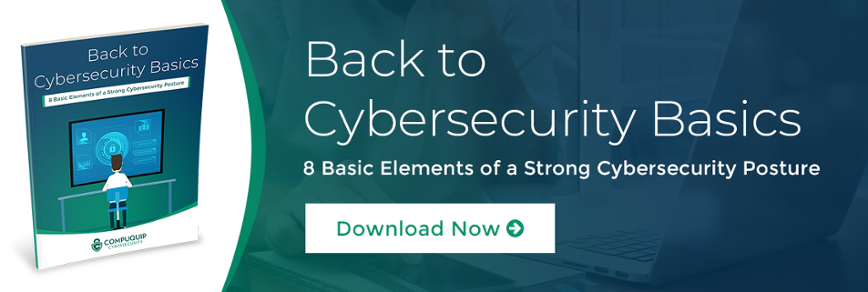3 Reasons Why Cybersecurity is Not a Device
Most businesses get caught up in the latest security buzzwords and simply purchase whatever is the latest technology for their cybersecurity needs and treat it like a complete, standalone solution. That this device-based approach to cybersecurity management could provide effective protection from modern threats is one of the most common misconceptions that businesses suffer from. Businesses need to remember that effective data security is not a device, but a mature cybersecurity program that is based on a reliable risk assessment and supported by a comprehensive strategy that accounts for numerous situations.
Why is cybersecurity “not a device?” A few reasons include:
1) A Lack of Comprehensive Cybersecurity Coverage
By focusing solely on acquiring the latest and shiniest new tech, companies may be leaving themselves poorly-protected against their biggest threats. If a new cybersecurity solution isn’t properly integrated into an overall security management strategy, it could leave large gaps in your protections. Worse, it’s possible that two incompatible solutions could create program conflicts that actually increase your vulnerability to attack rather than minimizing it.
2) Cybersecurity Program Management Needs to Be Scalable
Constantly chasing the latest solution can be a massive drain on your cybersecurity management budget—leaving you unable to scale your cybersecurity efforts across the whole of your organization. It’s also important that the money spent on building this mature cybersecurity program is divided wisely among your employees, security solutions, and security process refinements.
3) Different Businesses/Departments Have Different Cybersecurity Needs
Each business will have unique cybersecurity needs. In fact, larger companies with distinct departments may notice that these departments even have different cybersecurity challenges to overcome. This is why it’s important to run a risk assessment to identify these challenges so they can be properly addressed rather than simply using a random technology solution simply because it’s new.
Building a Mature Cybersecurity Management Program
Understanding your business’ unique balance of compliance requirements, customer & supplier expectations, and overall risk tolerance is key to building an effective, scalable, and mature cybersecurity program. Here are a few guidelines/suggestions to get you started on building an effective strategy for managing your cybersecurity:
- Inform Leadership of Cybersecurity’s Importance to Your Organization. It’s important to get buy-in from leadership for any major initiative in your business, and creating a mature cybersecurity program is no different. Educate the leadership team and provide some context from within your industry (such as the potential costs of poor cybersecurity).
- Use Industry Peers to Establish What “Good” Cybersecurity Looks Like. If you have competitors in your industry with excellent track records for cybersecurity, be sure to learn from their example. While not everything will always be applicable, studying other organizations who are successful at managing cybersecurity challenges can provide some useful insights.
- Distinguish Your Most Sensitive Data. It’s important to audit the assets on your network to identify what data you have and where it is, then you can prioritize the most sensitive data that needs the most protection so you can choose appropriate security measures.
- Perform a Cybersecurity Risk Assessment. Performing a risk assessment and creating a cyber risk profile will help you to determine the specific types of risks that are most relevant to your business so you can allocate a proportionate amount of your cybersecurity budget to addressing those risks. Calculating your overall risk is crucial for ongoing cybersecurity management.
- Develop Specific Program Elements. Using the information gleaned from your risk assessment, start developing the individual program elements needed to effectively manage your risks—things like your vulnerability management, incident response, and disaster recovery/business continuity plans or employee cybersecurity awareness training.
- Formalize a Two- or Three-Year Cybersecurity Plan. After you develop the individual program elements, organize them into a formal, long-term strategic plan that covers how you will address your cybersecurity issues over the next few years.
- Create a System for Measuring and Reporting Security Efforts. If a process isn’t measured in some way, how can you improve it? Measuring the impact of your cybersecurity management efforts is crucial for making ongoing improvements that will help you to continuously improve your cybersecurity posture. These metrics should be provided to key decision makers in your organization to show how you’ve moved the proverbial “needle” for your cybersecurity program. Comparisons to historical security milestones can help to establish progress that’s been made.
Need help establishing a mature cybersecurity program that will help your organization protect its most important data? Check out Compuquip’s Cybersecurity Basics Guide at the link below, or contact us today to get started with a risk assessment.

